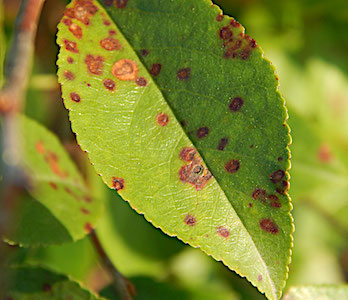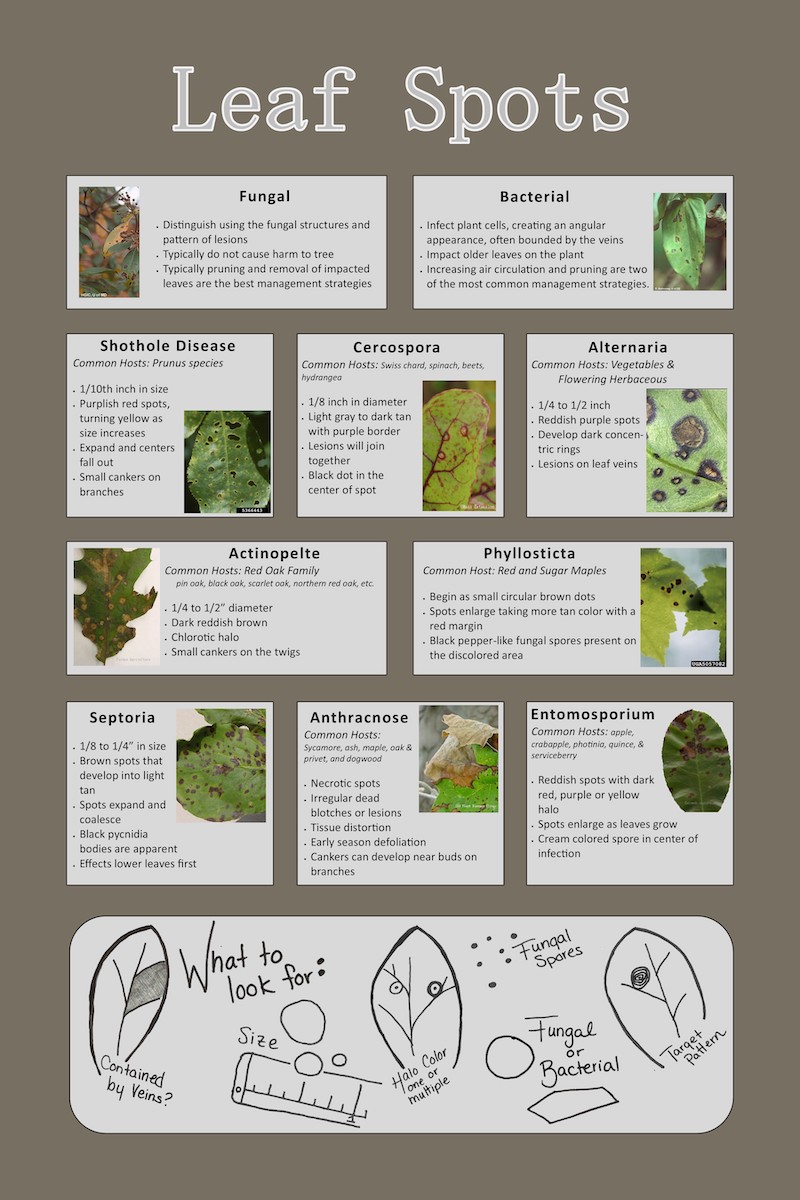Seeing Spots?
Look Closely: All Leaf Spots are Not the Same
By Alice Cox, Fairfax County Cooperative Extension intern
 Not so long ago, all those leaf spots afflicting plants looked the same to me. In fact, I couldn’t begin to imagine how to tell the difference among them. But after working with Fairfax County, Va., master gardeners in their diagnostic lab (as part of my internship with the county’s Cooperative Extension) and doing a bit of research, I started to discern differences in the spots’ appearances. Working in the lab to identify leaf spots, you learn to look for changes in leaf shape and color and to consider the spots’ size and spread.
Not so long ago, all those leaf spots afflicting plants looked the same to me. In fact, I couldn’t begin to imagine how to tell the difference among them. But after working with Fairfax County, Va., master gardeners in their diagnostic lab (as part of my internship with the county’s Cooperative Extension) and doing a bit of research, I started to discern differences in the spots’ appearances. Working in the lab to identify leaf spots, you learn to look for changes in leaf shape and color and to consider the spots’ size and spread.
Leaf spots can make plants unsightly, as their leaves change color and fall off during the growing season, but they typically do not cause long-term damage to plants. They can, however, have an impact on how well leaf crops such as spinach, lettuce and other greens sell. Nobody wants to buy spotted spinach! Not many treatments exist for leaf spots—most of the time, what you see is what you get—but you can take steps to prevent them, such as raking up any fallen leaves and removing them from the garden. For some specific treatments, consult the 2019 Virginia Pest Management Guide.
So how do you begin to identify leaf spots? From master gardeners, I’ve learned to look for six characteristics: size, shape, pattern, color change, area impacted and presence of fungal spores. The easiest factor to start with is the size of the leaf spot: Is it one-tenth of an inch long or one-half an inch? Then, look at the colors: Is it purple, red, brown or tan? In what order do the colors appear if there is a halo present? After answering those questions, you can narrow down what looks like an intimidating number of leaf-spot possibilities and point to a specific diagnosis.
Give yourself a quick test. Take a walk around the neighborhood or down a trail and find a leaf that has some discolored spots on it. Pick it up, take it home, and compare it to the Leaf Spot Chart pictured in the graphic below (or downloaded from the references list). Which leaf spot do you think you have located?
Remember you might need the help of a handy magnifying glass to see some of the detail in the leaf. Like me, I hope you conclude that it’s amazing what you can learn when you know what to look for!
References
2019 Virginia Pest Management Guide
Leaf Spot Chart, Alice Cox
